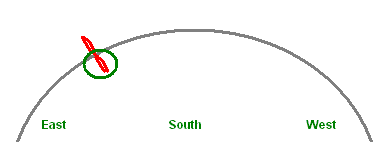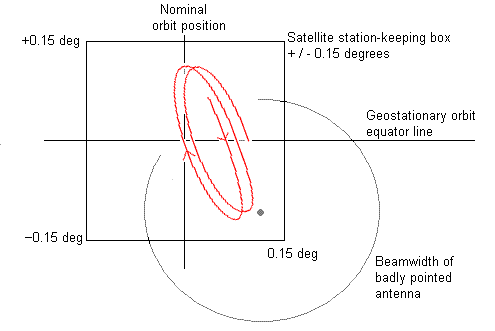| Home Login Register |
| Satellite Internet forum › Dish pointing and alignment › Satellite elevation question. |
|
Pages: 1
|
Satellite elevation question.(Read 8736 times) |
|
Vega
Member
★★ Offline Posts: 32 |
Nov 3rd, 2007 at 5:12pm
|
| Back to top |
IP Logged
|
|
USN - Retired
YaBB Moderator
★★★★★ Offline Posts: 837 Kentucky (USA) |
Reply #1 - Nov 3rd, 2007 at 7:47pm
|
| Back to top |
USN (Ret)
IP Logged
|
|
Eric Johnston
Senior Member
★★★ Offline Posts: 2109 |
Reply #2 - Nov 3rd, 2007 at 11:35pm
|
| Back to top |
IP Logged
|
|
nera_installer
Member
★★ Offline Posts: 8 |
Reply #3 - Nov 5th, 2007 at 1:51pm
|
| Back to top |
IP Logged
|
|
pgannon
Senior Member
★★★ Offline Posts: 109 |
Reply #4 - Nov 5th, 2007 at 5:02pm
|
| Back to top |
IP Logged
|
|
nera_installer
Member
★★ Offline Posts: 8 |
Reply #5 - Nov 5th, 2007 at 5:09pm
|
| Back to top |
IP Logged
|
|
Ex Member
Ex Member
|
Reply #6 - Jan 9th, 2008 at 9:24pm
|
| Back to top |
IP Logged
|
|
USN - Retired
YaBB Moderator
★★★★★ Offline Posts: 837 Kentucky (USA) |
Reply #7 - Jan 9th, 2008 at 9:50pm
|
| Back to top |
USN (Ret)
IP Logged
|
|
Eric Johnston
Senior Member
★★★ Offline Posts: 2109 |
Reply #8 - Jan 9th, 2008 at 11:15pm
|
| Back to top |
IP Logged
|
|
Ex Member
Ex Member
|
Reply #9 - Jan 10th, 2008 at 7:21am
|
| Back to top |
IP Logged
|
|
Eric Johnston
Senior Member
★★★ Offline Posts: 2109 |
Reply #10 - Jan 10th, 2008 at 10:05am
|
| Back to top |
« Last Edit: Jan 10th, 2008 at 3:59pm by Eric Johnston »
IP Logged
|
|
Maxim Usatov
Senior Member
★★★ Offline Posts: 116 Czech Republic |
Reply #11 - Jan 12th, 2008 at 11:57pm
|
| Back to top |
IP Logged
|
|
Pages: 1
|
Email me: eric@satsig.net
Powered by YaBB 2.5.2!
YaBB Forum Software © 2000-. All Rights Reserved.
Disclaimer, Terms of Use and Privacy Forum User Agreement Forum rules Cookie policy.




